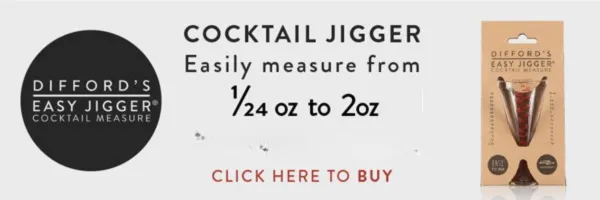Are you a Discerning Drinker?
Join thousands of like-minded professionals and cocktail enthusiasts, receive our weekly newsletters and see pages produced by our community for fellow Discerning Drinkers.


About & How To Pour Test
The Satan's Whiskers' Pour Test assesses bartenders' speed and pouring accuracy and awards a score based on a combination of the time taken to pour 17 specified measures and the accuracy of the measures poured.
To practice the pour test, you will need:
- A 700ml glass bottle, filled with tap water
- A pour spout - if you wish to use one
- Your choice of jiggers if you wish to use them
- Shaker tins to pour into
- Digital scales to measure your pours (sensitivity of 0.1g needed)
- A stopwatch to time yourself
The test consists of making 17 pours. If you have 17 tins to pour into, then you can perform all the pours in one go, but if it's more practical, you can split the test into two parts – make the first eight pours first, measure the results, then make the second nine pours – so you only need nine tins.
Time yourself making the sequence of pours, then enter the results into the spreadsheet.
The 17 pours must be made in this specific sequence:
- 25ml
- 25ml
- 25ml
- 25ml
- 50ml
- 50ml
- 50ml
- 50ml
- 5ml
- 10ml
- 15ml
- 20ml
- 25ml
- 30ml
- 35ml
- 40ml
- 50ml
Enter your time into the 'time (seconds)' box to a sensitivity of two hundredths e.g. 45.78 seconds; if you've split the test into two, then add the times together for your total time to perform the 17 pours.
Measure the amount of liquid you have poured by weighing each individual pour on the digital scales. 1 g = 1 ml. Record your scores to a sensitivity of 1 decimal place, e.g. 26.4g
Enter the results into the spreadsheet in the corresponding boxes for each pour.
A complete sheet should look something like this:

When you have entered the time and all the pouring info into the sheet, it will tell you your accuracy percentage and your overall combined score for accuracy and speed.
Note that the accuracy and total score figures on the spreadsheet will only make sense once you've entered all of the information for the run.
Download Pour Test spreadsheet here/b>.
Scoring
Scoring is based on speed and accuracy:
- Points are scored in relation to a par accuracy of 95% and a par time of 60 seconds.
- Being more accurate/faster than par scores plus points.
- Being less accurate/slower scores minus points.
- Each 0.1% accuracy above/below 95% scores +/– one point.
- Each second faster/slower than 60 seconds scores +/– one point.
- Your overall score is the combination of your points scored for speed and accuracy.
The winner will be the bartender with the highest overall score.
Examples Of Scoring
RUN 1
95.0% scores 0 points for accuracy.
60.00 seconds scores 0 points for speed.
Overall score = 0 points.
0 (Zero) points is the par score.
RUN 2
97.0% scores 20 points for accuracy.
65.00 seconds scores –5 points for speed.
Overall score = 15 points.
RUN 3
94.0% scores –10 points for accuracy.
35.00 seconds scores 25 points for speed.
Overall score = 15 points.
RUN 4
97.0% scores 20 points for accuracy.
40.00 seconds scores 20 points for speed.
Overall score = 40 points.
More information
See Roundbuilding





